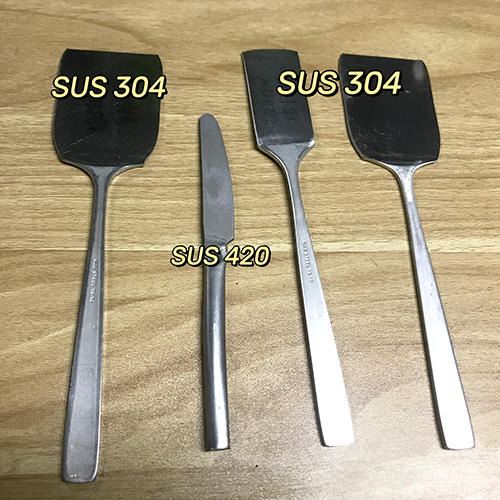Knife Annealing VS Quenching Heat Treatment
Feb. 27, 2025
In the heat treatment process of knives, annealing and quenching are two important technological methods, each suitable for different types of knife materials and usage requirements.

Knives Requiring Annealing Heat Treatment
Annealing is a heat treatment process primarily used to reduce the hardness and brittleness of knife materials, enhancing their plasticity and toughness, and preparing them for subsequent processing or use. The following are some knives that require annealing heat treatment:
(1) Knives with excessively high hardness and brittleness after quenching or other heat treatments: These knives may have developed excessively high hardness and brittleness during quenching or other heat treatments, making subsequent processing or use difficult. Annealing can reduce their hardness and brittleness, making them more suitable for subsequent processing or use.
(2) Cast knives: Cast knives may have developed structural defects during the casting process, such as coarse grains and uneven carbide distribution. Annealing can improve these structural defects and enhance the mechanical properties and cutting performance of the knives.
(3) Knives requiring improved processing performance: For knives that require further processing (such as forging, rolling, etc.), annealing can make their structure more uniform and finer, thereby improving their processing performance.
Knives Requiring Quenching Heat Treatment
Quenching is a rapid cooling heat treatment process primarily used to increase the hardness and wear resistance of knife materials, enhancing their cutting performance and service life. The following are some knives that require quenching heat treatment:
(1) High-speed steel knives: High-speed steel is a metal cutting tool material with good wear resistance and high-temperature resistance. To achieve higher hardness and wear resistance, it requires quenching treatment.
(2) Alloy tool steel knives: Alloy tool steel contains a large number of alloy elements, and ordinary annealing treatment cannot achieve the required hardness. Therefore, quenching treatment is necessary to increase its hardness and wear resistance.
(3) Tungsten carbide knives: Tungsten carbide is an extremely hard metal cutting tool material with extremely high hardness and wear resistance. Quenching treatment can make it even harder, thereby improving its cutting performance and service life.
Summary
Annealing and quenching are two important technological methods in the heat treatment process of knives. Annealing is primarily used to reduce the hardness and brittleness of knife materials, enhancing their plasticity and toughness. In contrast, quenching is primarily used to increase the hardness and wear resistance of knife materials, enhancing their cutting performance and service life. The specific choice of heat treatment method depends on factors such as the type of knife material, usage requirements, and subsequent processing requirements.









